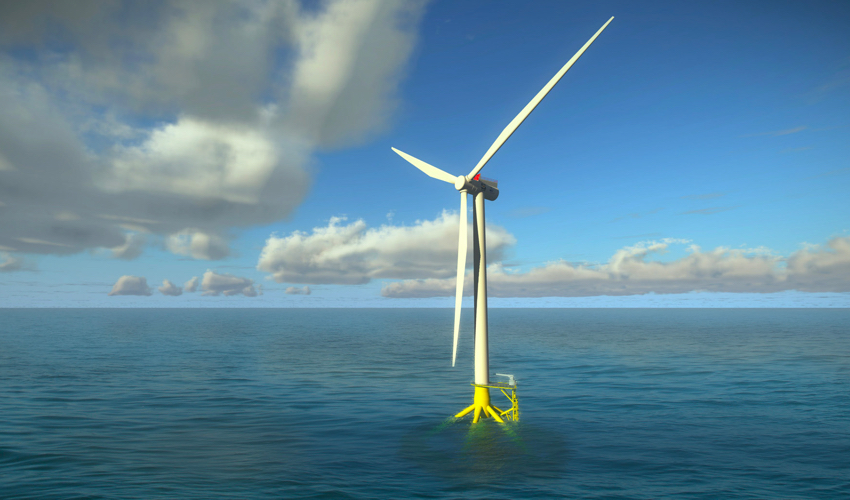Maritime Research Institute Netherlands (Marin) is set to carry out the full-scale monitoring of a floating wind prototype off the west coast of Ireland as well as to develop its digital twin. Subject to consent, a full-scale floating wind prototype designed by Saipem will be deployed there.
Offshore wind is one of the most promising renewable energy technologies in the path to the energy transition away from fossil fuels. While fixed bottom wind turbines are a proven technology for shallow water applications, the development of floating wind technology will unlock the potential of deeper water sites, increasing potential for growth.
Floating Offshore Wind in Harsh Conditions
The prototype will be placed off the west coast of Ireland at a test site of the Sustainable Energy Authority of Ireland (SEAI). The project is part of the 31 million euro Interreg NWE project AFLOWT. This project is led by the European Marine Energy Centre (EMEC) working in partnership with SEAI, Saipem, Marin, Fraunhofer Iwes, ESB, CaLiCyA and University College Cork. The aim is to demonstrate the survivability and cost-competitiveness of floating offshore wind technology in the harsh conditions off the west coast of Ireland.
Digital Twin
Marin will be involved in the full-scale monitoring of the floating foundation. The system will measure the floater position through a high accuracy DGPS, the wave frequent motions with an inertial motion unit, the mooring line tensions through innovative vibrating wire gauges and possibly also stresses at selected fatigue prone locations. These measurements will be linked in real time to time domain simulation tools, creating a digital twin.
Mooring Line Capacity
Onboard software for integrity management of the mooring lines will be developed. Using the measured floater motions and the horizontal position as input, this tool will be able to compute the mooring line tension, as well as detect eventual mooring line failures. A comparison between the computed mooring line tensions with the measured values will close the loop by validating this approach and will enable a full understanding of its capacity.
As this approach does not require sensors installed on the mooring line itself, it provides a reliable and cost-effective solution for monitoring the status and the fatigue accumulation on the mooring lines, resulting in an overall cost reduction and increased reliability of the floating wind farm.
Source: Marin Report Magazine 127. We thank Marin and authors Nicola Grasso and Sebastien Gueydon for their permission to re-publish their article on swzmaritime.nl. Picture courtesy of Saipem.








